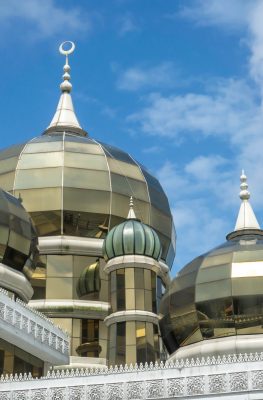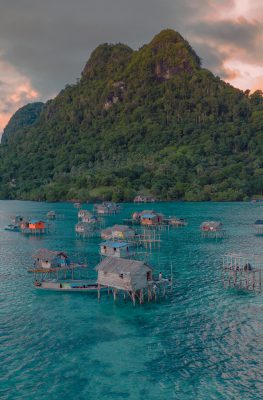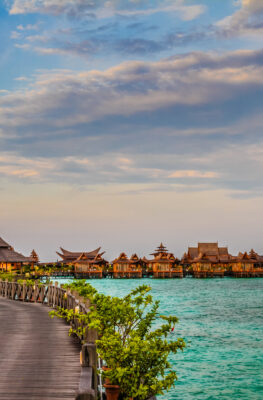Published on November 29, 2017

Beaded shoes in Melaka, Malaysia. Image courtesy of Tourism Malaysia.
Malaysia’s strength lies in its many cultures coming together. The Malay native community and the Chinese, Indian, and Eurasian communities that came later in the wake of centuries of trade and colonisation, have all combined into a modern Malaysian culture that is much stronger and more vibrant than the sum of its parts.
Visit Malaysia’s oldest cities to see the interplay of cultures in action:
Melaka was the capital of the former Sultanate of Melaka, the wellspring of Malay heritage. The Chinese predated the arrival of the Portuguese, Dutch and British: the presence of the former later gave rise to the Peranakan, which blended Malay and Chinese characteristics to create a vibrant new culture.
The Sultanate Palace recapitulates the Malay royal traditions that made Melaka a cultural power in its time. The Stadthuys, St. Paul’s Church and A’Famosa ruins, and the Portuguese Square recall the city’s years as a European bastion. And Melaka’s Chinatown – including Jonker Walk and the Baba Nyonya Museum – show off the significant Chinese and Peranakan commercial and cultural presence.
All these can be found in Melaka’s historic core, which is a UNESCO World Heritage Zone.
Ipoh is the state capital of Perak, the beneficiary of a 19th-century tin mining boom. Many historic buildings still remain from its heyday, including a majestic railway station cnicknamed the “Taj Mahal of Ipoh”, the shophouses and hawker stalls of Kong Heng Square, and the neoclassical Ipoh Town Hall and Law Courts.
The countryside around Ipoh retains a few surprises, among them Kellie’s Castle (a European-style mansion built by a Scottish planter), and the Sam Poh Tong cave temple.

Penang, under British rule at one time, evolved into a major trading post and disembarkation point for Chinese and Indian laborers. The city of George Town still bears hallmarks of its colonial origins: its downtown core is a UNESCO World Heritage Zone with an abundance of shop houses, clan houses, mosques and mansions.
Key stops in Penang’s historic center include the Cheong Fatt Tze Mansion and Peranakan Mansion, both former residences of Chinese tycoons; the “Street of Harmony” that features the houses of worship of four different faiths; and Fort Cornwallis, a former British stronghold.
Beyond George Town, you’ll find the historic Penang Botanic Gardens, the food scene at Gurney Drive, and the “temple of Supreme Bliss”, Kek Lok Si.
Cheong Fatt Tze Mansion in Penang. Image courtesy of Tourism Malaysia.
.jpg)
Stadthuys in Melaka. Image courtesy of Tourism Malaysia.

Exploring the Cheng Hoon Teng Temple in Melaka. Image courtesy of Tourism Malaysia.

Ipoh night market. Image courtesy of Tourism Malaysia.

Street art in Ipoh. Image courtesy of Tourism Malaysia.
Similar Southeast Asia Experiences
The rest of Southeast Asia’s urban food scene is to die for. For other foodie cities, go to Singapore for its hawker centers, especially those clustered in its cultural precincts; the Old District in Hanoi, Vietnam; and the food scene in Thailand’s Bangkok and Ayutthaya.






